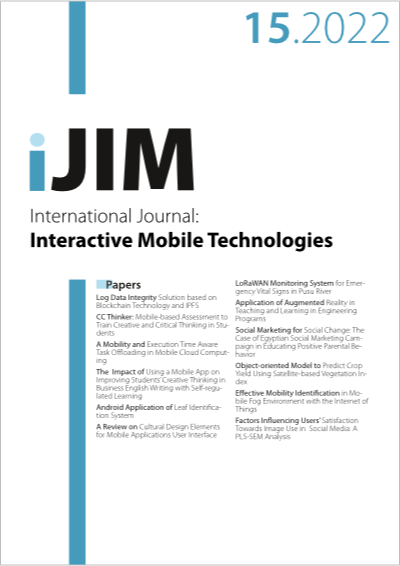Object-oriented Model to Predict Crop Yield Using Satellite-based Vegetation Index
DOI:
https://doi.org/10.3991/ijim.v16i15.33269Keywords:
Voronezh, Remote sensing, NDVI, Machine learning, Feature selection.Abstract
Different models had been developed to predict crop yields based on remotely sensed data. Most approaches were based on developing empirical relationships between the Satellite based Normalized difference vegetation index NDVI data and the crop yield. This article proposes to introduce methodological framework for constructing an object-oriented yield prediction model using satellite data based on the two-level regression models; with taken into consideration the trend caused by the influence of technological improvements. Regression models for the wheat and barley crop yield predictions have been developed for twenty-seven typical districts in the Voronezh region. The two-level regression model, including FSR technique firstly to select the set of features that reflect the spatial variations in crops, soil, agriculture management within districts, after carry out the steps of exploratory data analysis EDA, objects creation and zonal average of each object. Whereas the second level consist of yield prediction with multiple linear regression MLR, Least Absolute Shrinkage and Selection Operator Lasso, Support vector machines SVM techniques. The absolute error between the predicted and observed yields of 2011-2014 years was not exceed 19(16) centner/ha for wheat(barley) at worst case. In spite of that the SVM technique outperforms rest techniques by average RMSE of 5.59(4.51) for wheat(barley).
Downloads
Published
How to Cite
Issue
Section
License
Copyright (c) 2022 Haider Th.Salim Alrikabi; Z.H. Khalil, Amel H. Abbas

This work is licensed under a Creative Commons Attribution 4.0 International License.



